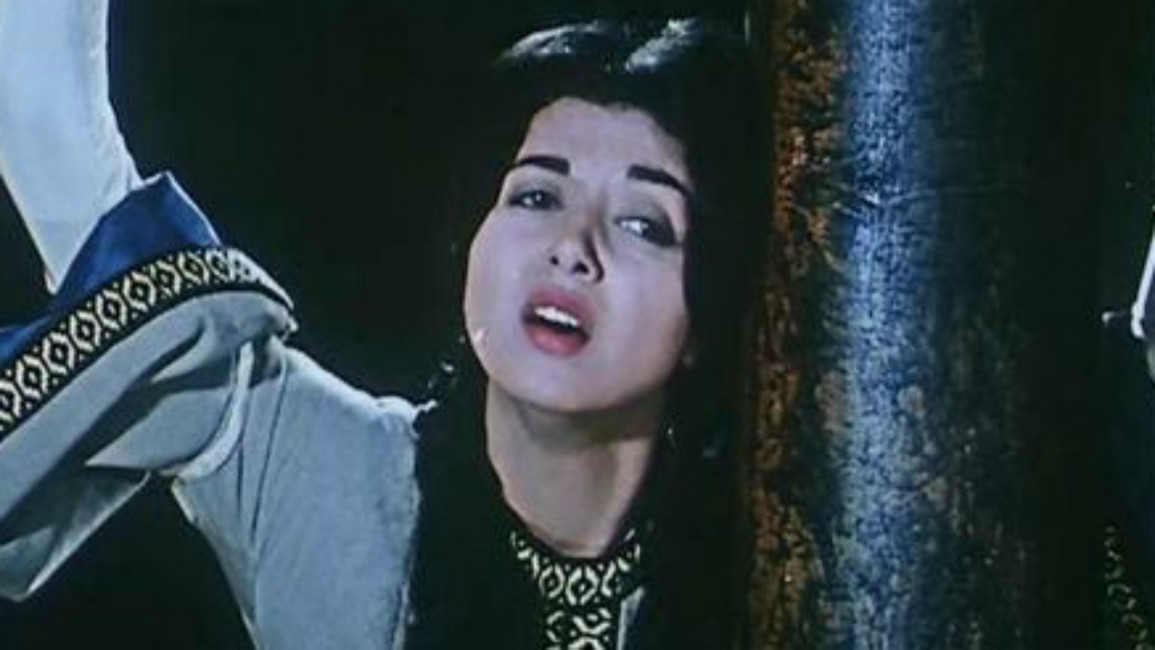
Rabaa square's namesakes: from saint to state prosecutor
Rabaa square's namesakes: from saint to state prosecutor
Blog: Egypt has officially renamed Rabaa square after assassinated state prosecutor. The intersection's original namesake was an eighth century Sufi saint.
2 min read
A screenshot of the 1963 Egyptian feature on Saint Rabea's life [YouTube]
Following calls made by Egypt's judges syndicate, the cabinet has officially renamed Rabaa al-Adaweya square after assassinated prosecutor general Hisham Baraket.
Barakat gave the green light to the armed forces to break up the Muslim Brotherhood sit-in at the square in August 2013 - a raid which left around 900 protesters dead, and more than 3,000 injured.
During Barakat's two-year period as state prosecutor, there were more than 50,000 political detentions reported, according to local media sources, leading to him being refered to as the "army's prosecutor".
The full new name of the Cairo intersection will be "the martyr Hisham Barakat Square".
The square's original namesake was Rabea al-Adaweya Basri, an eighth century female Sufi saint whose biography differs enormously from Barakat's.
Rabea is thought to have been born around 717AD, in Basra, Iraq, where she would remain for most of her life.
According to one of her biographers, the Persian scholar Sufi Farid al-Din Attar, she was born to an impoverished home.
Her parents named her Rabea, Arabic for "the fourth", as they already had three daughters.
According to her hagiography, Rabea became destitute and orphaned when famine hit Basra, and she was sold as a slave.
One day, in desperation, Rabea threw herself on the ground in prayer - and was answered by reassuring words from God. After this, she became devoutly religious.
According to legend, her master once saw her praying with a bright light around her, and immediately set her free so she could fulfil her religious duties.
Rabea became an Sufi acestic, going on pilgrimage to Mecca and gaining a reputation for performing miracles.
Although much of her story is legend, the historical figure of Rabea is thought to be the first in a long line of female Sufi saints, and one of the most important early Sufi poets.
Although Rabea never made it to Egypt, she is well known in the country; a 1963 Egyptian film about her life starred Um Kulthoum, and the mosque in Rabaa square is also named after her.
Many of Rabea's religious writings which are attributed to her are still widely translated, republished and studied today:
“How can I endure the next world
Without seeing your face?
I am a stranger in your country
And lonely among your worshippers
That is the substance of my complaint"
Barakat gave the green light to the armed forces to break up the Muslim Brotherhood sit-in at the square in August 2013 - a raid which left around 900 protesters dead, and more than 3,000 injured.
During Barakat's two-year period as state prosecutor, there were more than 50,000 political detentions reported, according to local media sources, leading to him being refered to as the "army's prosecutor".
The full new name of the Cairo intersection will be "the martyr Hisham Barakat Square".
 |
|
| A Persian portrait of the young Rabea [creative commons] |
The square's original namesake was Rabea al-Adaweya Basri, an eighth century female Sufi saint whose biography differs enormously from Barakat's.
Rabea is thought to have been born around 717AD, in Basra, Iraq, where she would remain for most of her life.
According to one of her biographers, the Persian scholar Sufi Farid al-Din Attar, she was born to an impoverished home.
Her parents named her Rabea, Arabic for "the fourth", as they already had three daughters.
According to her hagiography, Rabea became destitute and orphaned when famine hit Basra, and she was sold as a slave.
One day, in desperation, Rabea threw herself on the ground in prayer - and was answered by reassuring words from God. After this, she became devoutly religious.
According to legend, her master once saw her praying with a bright light around her, and immediately set her free so she could fulfil her religious duties.
Rabea became an Sufi acestic, going on pilgrimage to Mecca and gaining a reputation for performing miracles.
Although much of her story is legend, the historical figure of Rabea is thought to be the first in a long line of female Sufi saints, and one of the most important early Sufi poets.
Although Rabea never made it to Egypt, she is well known in the country; a 1963 Egyptian film about her life starred Um Kulthoum, and the mosque in Rabaa square is also named after her.
Many of Rabea's religious writings which are attributed to her are still widely translated, republished and studied today:
“How can I endure the next world
Without seeing your face?
I am a stranger in your country
And lonely among your worshippers
That is the substance of my complaint"
Although her name may have been removed from the square, many will still remember her poems, most concerning the divinity of love.




